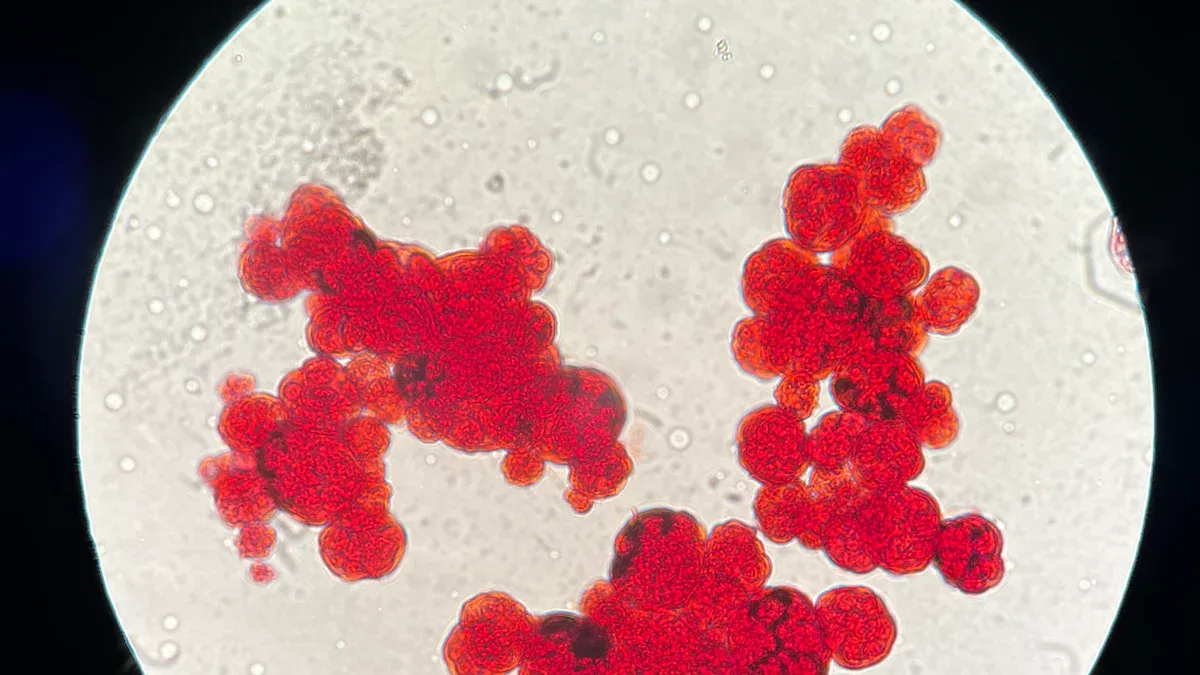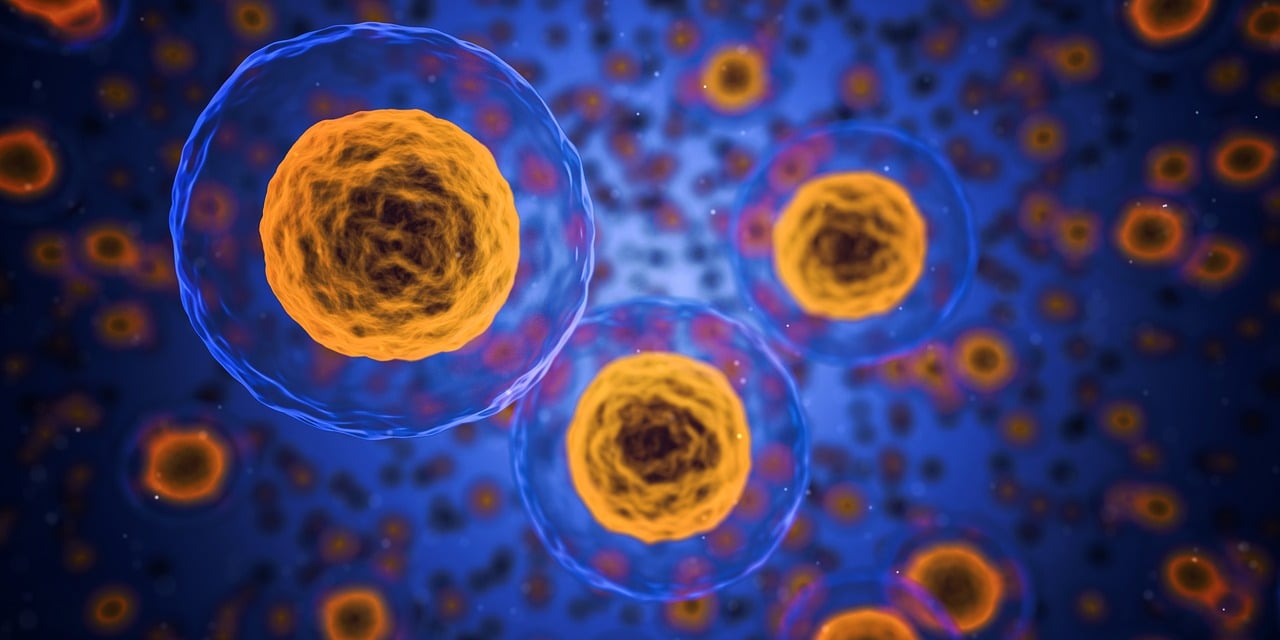What is Carcinoid Syndrome and Its Symptoms

Carcinoid syndrome occurs when rare neuroendocrine tumors release hormones into your bloodstream. These tumors often develop in the gastrointestinal tract or lungs. While not all neuroendocrine tumors cause this condition, the likelihood varies. For example:
Source | Percentage of Neuroendocrine Tumors Leading to Carcinoid Syndrome |
|---|---|
Merck Manual | Fewer than 10% |
Penn Medicine | Up to 40% for GI carcinoids |
Cleveland Clinic | 20% (1 in 5) |
You might notice symptoms like flushing, diarrhea, or wheezing. Recognizing these early signs and consulting a doctor can help you manage the condition effectively.
Key Takeaways
Carcinoid syndrome happens when certain tumors release hormones. This can cause flushing, diarrhea, and trouble breathing like wheezing.
It is important to notice symptoms early. See a doctor if you have ongoing flushing, diarrhea, or breathing problems.
Doctors use your medical history, check-ups, blood tests, and scans to find out if you have this condition.
Treatments include medicines like somatostatin analogs, surgery to remove tumors, and changes in daily habits to help with symptoms.
Taking care of your feelings and yourself is very important. Do things you like and join support groups to meet others with the same issues.
Symptoms of Carcinoid Syndrome

Carcinoid syndrome presents a range of symptoms that vary in severity and combination from person to person. Some individuals may experience mild symptoms for years, while others might face more severe or sudden episodes. Recognizing these symptoms early can help you seek timely medical attention.
Common Symptoms
Flushing of the skin
One of the hallmark signs of carcinoid syndrome is bright red flushing. This often affects your face, neck, or upper chest. The flushing may last for a few minutes or persist for hours. Triggers like stress, alcohol, or certain foods can make this symptom worse. You might also feel warm or notice sweating during these episodes.
Chronic diarrhea and abdominal cramping
Diarrhea is another common symptom. It may include intestinal pain, cramping, or gas. This can disrupt your daily life and lead to dehydration if left untreated. Many individuals initially mistake this for irritable bowel syndrome or another gastrointestinal condition, delaying proper diagnosis.
Wheezing or shortness of breath
You may notice wheezing or difficulty breathing, especially during flushing episodes. This occurs because the hormones released by the tumors can affect your airways. These symptoms might resemble asthma, making it important to consult a doctor for an accurate diagnosis.
Less Common Symptoms
Heart valve damage (carcinoid heart disease)
Over time, the hormones released by carcinoid tumors can damage your heart valves. This condition, known as carcinoid heart disease, may lead to symptoms like fatigue, swelling in your legs, or shortness of breath. If untreated, it can progress to heart failure.
Skin lesions or rashes
Some individuals develop skin changes, such as lesions or rashes. These may appear alongside flushing or as separate symptoms. While less common, they can be an early indicator of carcinoid syndrome.
Fatigue and weight loss
You might feel unusually tired or notice unexplained weight loss. These symptoms often result from the body’s inability to absorb nutrients properly due to chronic diarrhea or other metabolic changes caused by the syndrome.
Carcinoid crisis
In rare cases, you could experience a carcinoid crisis. This severe episode involves intense flushing, dangerously low blood pressure, and breathing difficulties. It can be life-threatening and requires immediate medical attention.
Note: Symptoms of carcinoid syndrome can overlap with other conditions, making diagnosis challenging. If you experience persistent symptoms like flushing, diarrhea, or wheezing, consult a healthcare provider promptly.
Diagnosis of Carcinoid Syndrome
Accurate diagnosis of carcinoid syndrome involves a combination of medical history, physical examination, laboratory tests, and imaging techniques. Each step plays a crucial role in identifying the condition and its underlying cause.
Medical History and Physical Examination
Discussion of symptoms and medical history
Your doctor will begin by discussing your symptoms and medical history. This step helps identify patterns, triggers, and risk factors. For example, chronic diarrhea, flushing, or wheezing might point toward carcinoid syndrome. Sharing details about your lifestyle and overall health can help distinguish these symptoms from other conditions like irritable bowel syndrome.
Physical signs observed by a doctor
During the examination, your doctor will look for physical signs that suggest carcinoid syndrome. These may include:
Symptom | Description |
|---|---|
Facial Flushing | Bright red flushing of the face, neck, or upper chest caused by excess serotonin. |
Diarrhea | Persistent diarrhea, sometimes with abdominal pain or malabsorption. |
Wheezing | Breathing difficulties, often triggered during flushing episodes. |
Heart Problems | Rapid heartbeat, low blood pressure, or signs of heart valve damage. |
Laboratory Tests
Blood tests to measure hormone levels
Blood tests can measure specific hormones linked to carcinoid syndrome. For instance:
Test Name | Hormone Measured | Description |
|---|---|---|
Chromogranin A test | Chromogranin A | Indicates the presence of neuroendocrine tumors (NETs). |
Blood serotonin test | Serotonin | Measures serotonin levels but is less reliable than other tests. |
Urine tests for specific markers (e.g., 5-HIAA)
A 24-hour urine test for 5-HIAA is a key diagnostic tool. This test detects a substance produced when your body breaks down serotonin. It has a sensitivity and specificity of over 90%, making it highly accurate for diagnosing carcinoid syndrome.
Tip: To ensure accurate results, avoid foods like bananas, walnuts, and avocados before the test, as they can affect serotonin levels.
Imaging and Scans
CT scans or MRIs to locate tumors
Imaging techniques like CT and MRI scans help locate neuroendocrine tumors. A triple-phase CT scan evaluates tumor spread and guides surgical planning. MRI scans are particularly effective at detecting liver metastases.
PET scans or specialized imaging techniques
PET scans, such as Gallium-68 DOTATATE PET, provide detailed images of tumors. These scans use radiotracers that bind to somatostatin receptors, which are commonly found in carcinoid tumors. PET scans can identify both primary and metastatic tumors, offering a more comprehensive view than CT or MRI scans.
Note: Early symptoms of carcinoid syndrome can mimic other conditions, making diagnosis challenging. Combining these diagnostic tools ensures a more accurate and timely diagnosis.
Biopsy
Tissue sampling to confirm tumor type
A biopsy plays a crucial role in confirming the type of tumor causing carcinoid syndrome. If the neuroendocrine tumor (NET) is localized and accessible, your doctor may recommend this procedure. During a biopsy, a small tissue sample is removed and analyzed by a pathologist to determine if the tumor is producing the hormones responsible for your symptoms.
In some cases, the diagnosis might occur incidentally during surgery for unrelated conditions. For example, if you undergo surgery for a gastrointestinal issue, the surgeon may discover a tumor and collect a sample for testing.
When tumors are located in areas like the small intestine, obtaining a sufficient tissue sample can be challenging. In such situations, your doctor might suggest surgical intervention instead of less invasive methods like an endoscopic biopsy or CT-guided needle biopsy. These alternative methods may not always provide enough tissue for an accurate diagnosis.
Tip: If your doctor recommends a biopsy, ask about the procedure and its potential outcomes. Understanding the process can help you feel more prepared.
Biopsies for neuroendocrine tumors are generally safe. A study involving 106 biopsies in 95 patients found no cases of carcinoid crisis or emergency interventions during the procedure. Only one patient (0.9%) experienced a complication requiring treatment for bleeding, while minor complications occurred in 4 cases (0.4%). These issues were unrelated to hormone release from tumor manipulation.
By confirming the tumor type through a biopsy, your healthcare team can develop a targeted treatment plan to manage your condition effectively.
Treatment Options for Carcinoid Syndrome

Medications
Somatostatin analogs to control hormone release
Somatostatin analogs are the cornerstone of managing carcinoid syndrome. These medications, such as Octreotide and Lanreotide, mimic the natural hormone somatostatin to reduce the release of excess hormones. They provide symptom relief for 50% to 70% of patients. Octreotide is available in both short-acting (daily injections) and long-acting (monthly injections) forms, while Lanreotide is administered monthly.
Tip: Discuss with your doctor which form of somatostatin analog suits your lifestyle and symptom severity.
Medications to manage specific symptoms
In addition to somatostatin analogs, other medications target specific symptoms. For example, Telotristat reduces serotonin production and is often used alongside somatostatin analogs to control diarrhea. Antidiarrheal medications can also help manage chronic diarrhea. In cases where symptoms are difficult to control, Interferon may be combined with somatostatin analogs for better results.
Medication | Description |
|---|---|
Somatostatin analogs | Mimic somatostatin to reduce hormone release; includes Octreotide and Lanreotide. |
Octreotide | Available in short-acting (daily injection) and long-acting (monthly injection) forms. |
Lanreotide | Long-acting somatostatin analog administered monthly. |
Telotristat | Reduces serotonin production; used with somatostatin analogs for diarrhea control. |
Interferon | May be combined with somatostatin analogs for difficult-to-control symptoms. |
Surgery
Tumor removal to reduce hormone production
Surgical removal of tumors can significantly reduce hormone production and alleviate symptoms. For small, localized tumors, complete removal often leads to symptom relief. In more complex cases, surgeons may perform tumor debulking, which involves removing as much of the tumor as possible to improve your quality of life.
Liver surgery for metastasized tumors
If carcinoid tumors spread to the liver, surgery can still help. Removing liver metastases often improves symptoms caused by hormone secretion. In some cases, this approach extends life expectancy and enhances overall health.
Tumor Location | Surgical Option Description |
|---|---|
Small Intestine | Surgical removal can extend life despite complications from hormone secretion. |
Liver | Removal of liver metastases can improve carcinoid syndrome symptoms. |
Varied, Many Tumors | Tumor debulking may improve symptoms and overall health for patients with heavy tumor burden. |
Lung/Bronchial | Early diagnosed bronchial NETs can be surgically removed, potentially relieving symptoms completely. |
Stomach and Rectal | Early detection and removal of small tumors can lead to total symptom relief. |
Other Therapies
Targeted therapies or chemotherapy
Targeted therapies focus on specific pathways that drive tumor growth. For example, oral medications targeting mTOR or VEGF pathways may be used in combination with other treatments. Telotristat, a targeted therapy, reduces serotonin production and helps control diarrhea when paired with somatostatin analogs.
Radiation therapy for advanced cases
Radiation therapy, including peptide receptor radionuclide therapy (PRRT), is an option for advanced carcinoid syndrome. PRRT delivers radiation directly to tumor cells, minimizing damage to surrounding tissues. This therapy can shrink tumors and provide symptom relief in cases where other treatments are less effective.
Note: Your treatment plan will depend on the tumor's location, size, and whether it has spread. Always consult your healthcare provider to explore the best options for your condition.
Lifestyle and Supportive Care
Dietary adjustments to manage symptoms
Making dietary changes can help you manage the symptoms of carcinoid syndrome. Since symptoms vary from person to person, an individualized nutrition plan works best. You might find it helpful to eat small, frequent meals throughout the day. Drinking fluids between meals instead of during them can also reduce discomfort.
If you experience nausea or vomiting, a low-residue or bland diet may provide relief. Liquid diets can also be effective in some cases. Avoiding gas-forming foods, such as cabbage, onions, and carbonated drinks, can help reduce bloating and gas. Identifying the root cause of your symptoms is essential before making significant dietary changes.
Tip: Keep a food diary to track which foods trigger your symptoms. This can help you and your healthcare provider create a tailored meal plan.
Emotional and psychological support
Living with carcinoid syndrome can take a toll on your emotional well-being. Focusing on self-care can make a big difference. Doing things you enjoy and maintaining a positive outlook can help you cope better. Many people find comfort in spirituality or religion, which can provide strength during challenging times.
Joining support groups can also be beneficial. These groups often include both patients and their families, offering a sense of community and shared understanding. If you feel overwhelmed, seeking professional counseling or bereavement support can provide additional help.
Incorporating relaxation techniques, such as yoga or meditation, can reduce stress. Physical activities like hiking or walking can improve your mood and overall health.
Note: Emotional support is just as important as physical care. Don’t hesitate to reach out for help when you need it.
Carcinoid syndrome can significantly impact your health if left untreated. Recognizing symptoms like flushing, diarrhea, or wheezing early allows you to seek timely medical advice. Accurate diagnosis and targeted treatments, such as medications or surgery, can help manage the condition effectively. Personalized care, including lifestyle adjustments, plays a vital role in improving your quality of life.
Remember: Early detection is key. If you notice persistent symptoms, consult a healthcare provider without delay. Taking action now can lead to better outcomes and a healthier future.
FAQ
What causes carcinoid syndrome?
Carcinoid syndrome occurs when neuroendocrine tumors release hormones like serotonin into your bloodstream. These tumors often develop in the gastrointestinal tract or lungs. The excess hormones cause symptoms such as flushing, diarrhea, and wheezing.
Can carcinoid syndrome be cured?
Treatment can manage symptoms effectively, but a complete cure depends on the tumor's location and spread. Surgery to remove the tumor offers the best chance for a cure. Medications and therapies help control symptoms and improve quality of life.
How is carcinoid syndrome different from other conditions?
Carcinoid syndrome has unique symptoms like flushing and chronic diarrhea caused by hormone release. These symptoms often worsen with triggers like stress or certain foods. Unlike other conditions, it requires specific tests like 5-HIAA urine analysis for diagnosis.
Are there foods I should avoid with carcinoid syndrome?
Yes, certain foods can trigger symptoms. Avoid alcohol, spicy foods, and serotonin-rich items like bananas and walnuts. Keeping a food diary helps identify personal triggers. Consult a dietitian for a tailored nutrition plan.
What happens during a carcinoid crisis?
A carcinoid crisis is a severe episode involving intense flushing, low blood pressure, and breathing difficulties. It can be life-threatening and requires immediate medical attention. Always inform your doctor if you experience worsening symptoms.
Tip: If you suspect a carcinoid crisis, seek emergency care immediately. Early intervention can save lives.
See Also
Carcinoid Tumors: Key Insights And Associated Symptoms
Essential Information About Carcinoid Tumors You Need
Adrenocortical Carcinoma: Recognizing Its Key Symptoms
Burkitt's Lymphoma: Understanding Its Symptoms And Impact
Basal Cell Carcinoma: Identifying Symptoms And Characteristics
